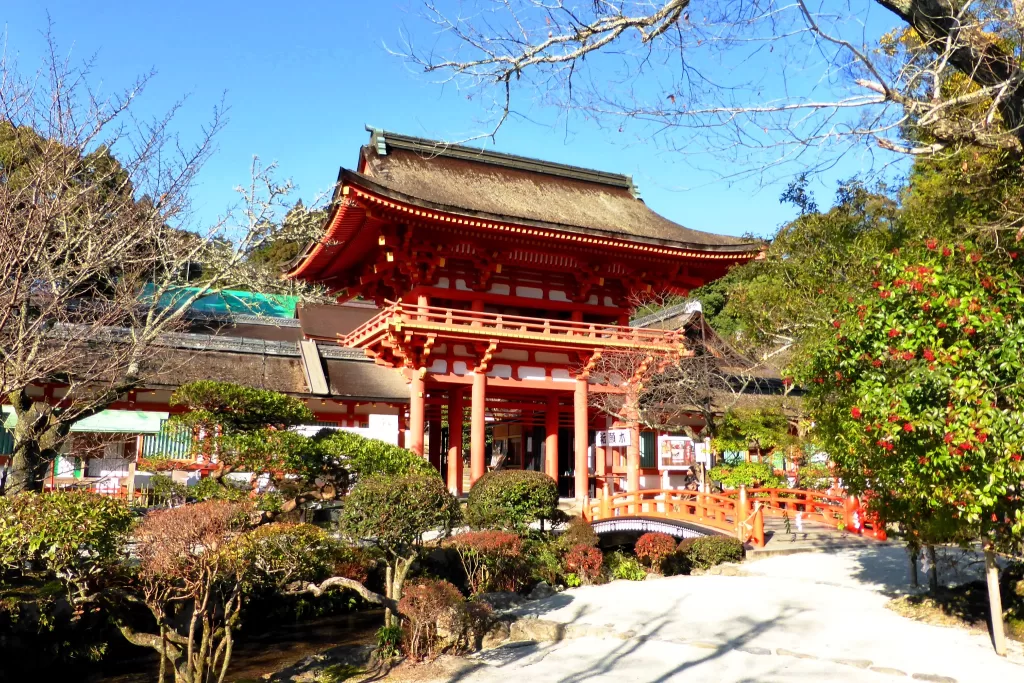Chōyō no Sekku in Kyoto: The Celebration of the Double Ninth Festival and Chrysanthemums

Kamigamo Shrine and the Auspicious Number Nine
In Japanese culture, certain numbers hold significant meaning, and the number nine is considered an auspicious number by the Shinto religion. Following this belief, Kamigamo Shrine located in northern Kyoto hosts the Chrysanthemum Festival, also known as Chōyō no Sekku, on the ninth day of the ninth month: September 9th.
Saiō-dai Princess Representation and Cultural Significance
During the Chōyō no Sekku celebration at the Kamigamo Shrine, a woman called Saiō-dai is chosen to represent an imperial princess for the famous Aoi Matsuri. She makes her appearance at the festival as part of her year-long appointment, donning a multi-layered kimono and classic hairstyle. The Saiō-dai is accompanied by young attendants who showcase the rich heritage of their culture.
Rituals to Transform Excess Yang into Auspiciousness
The balance of Yin (negative) and Yang (positive) is essential in East Asian cultures when it comes to attributing auspicious or inauspicious qualities to specific dates or numbers. Odd numbers are linked to Yin, while even numbers connect with Yang. By observing Chōyō no Sekku on the ninth day of September, the “double nine” represents an excess amount of Yang; however, practitioners transform this imbalance through ritual and prayer into an auspicious occasion.
History and Significance of Chōyō no Sekku
Chōyō no Sekku has been celebrated since the ninth century. This holiday not only highlights Japan’s beliefs but also marks the transition between seasons and commemorates the autumn rice harvest, which brings with it plenty of bounty. Historically observed according to the Chinese lunar calendar, Chōyō no Sekku is now annually celebrated on September 9th.

Chrysanthemums: The Symbol of Youth and Longevity
Chōyō no Sekku is popularly known as the Chrysanthemum Festival due to the blooming autumnal flower that embodies youth and longevity in the face of the approaching winter. During this holiday, people create displays using fresh-cut chrysanthemums and arrange chrysanthemum-themed arts and crafts activities. Many women wear chrysanthemum-designed kimonos to signify good fortune. It’s definitely one of the most awaited September events in Kyoto.
Unique Rituals at Kamigamo Shrine: Mimicking Sacred Crows
One intriguing ritual performed at the Kamigamo Shrine during Chōyō no Sekku involves priests enacting a special prayer dance where they mimic crows. Crows are considered sacred at Kamigamo Shrine due to the legend of the three-legged yatagarasu, which guided the first Emperor. After completing this ceremonial act, local children partake in a sumo wrestling match called karasu-zumo or “crow sumo,” which is significantly popular among visitors.
In Summary
Kyoto’s Kamigamo Shrine hosts a unique display of the Chōyō no Sekku celebration, replete with deep-rooted cultural elements such as Saiō-dai representations, chrysanthemum-themed art, traditional ritual dances mimicking sacred crows, and lively local sumo wrestling matches. The Double Ninth Festival showcases Japan’s ancient traditions while honoring the changing seasons and the importance of balance in life.
If you happen to be in Kyoto during the month of September and you are interested in experiencing traditional festivals, you should definitely consider attending the Seiryū-e Dragon Festival.